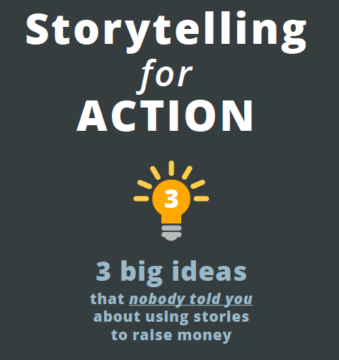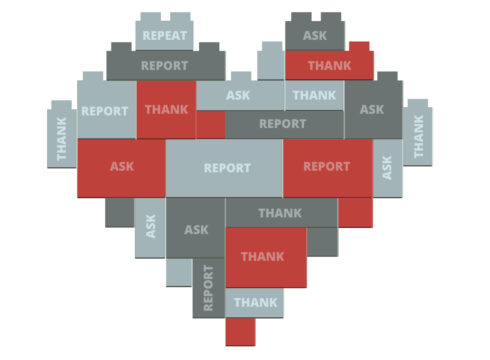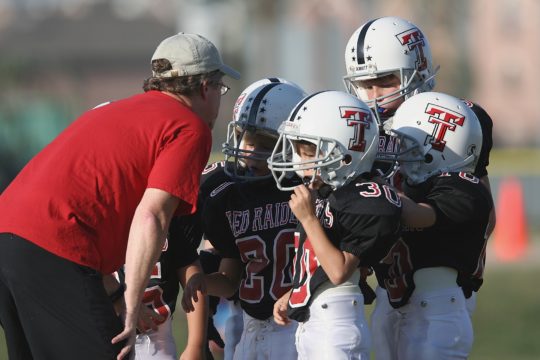The following is an excerpt from our new eBook, Storytelling for ACTION. If you enjoy this, download your free copy today.
“There’s an easy way to focus on your donor’s role, and a hard way. The best fundraisers do the easy way first, and then they do the hard way, too.
The Easy Way (do this first)
Use the word “you” a LOT. Use it early and often. This simple trick makes you include the donor in everything you say and write.
- 2-to-1 Ratio: We recommend at least a 2-to-1 ratio of “you’s” to “we’s.” That’s two of “you/you’re” for every one “we/us/our” and the name of your organization.
- Red Pen Test: Start with this classic test—circle all the “we/us/our” with red pen, and all the “you” with blue pen. You should see a LOT more blue than red.
- 10% Rule: Master fundraising copywriter Jeff Brooks says your goal should be to have 10% of all the words be the word “you.” It sounds crazy, but try it and then read it out loud. You sound like someone talking directly to another person that you care about—which is exactly what good fundraising sounds like.
If you do this, you’ll notice your donor will start to appear in your fundraising materials much more often. And if your donor sees herself in your communications, she’s more likely to give a gift.
The Hard Way (do this second)
Make the action you want your donor to take— the role you want her to play in the story—be specific, compelling, and powerful.
Think of it this way, when you tell the story of what your donor’s gift is going to do, get specific.
Examples of the specifics we’ve had great success with:
- provide one meal
- shelter for one night
- access to an art museum for one child
- curing one person
- one credit towards graduating from college
- help one teacher
It’s often hard for organizations to get specific about what a donor’s gift does. To your organization, the specifics seem less important than the whole of your programs or approach. And that’s true—from your point of view. You’re an expert!
But from the point of view of a donor— who doesn’t know nearly as much about program details as you do—the specifics are extraordinarily helpful.
That’s why in all our testing an action like “Be the difference for a refugee in need” doesn’t raise as much money as an action like “Provide medical care for a refugee for $7.”
If you’ve enjoyed this excerpt from Storytelling for Action, you can download the full eBook here.



